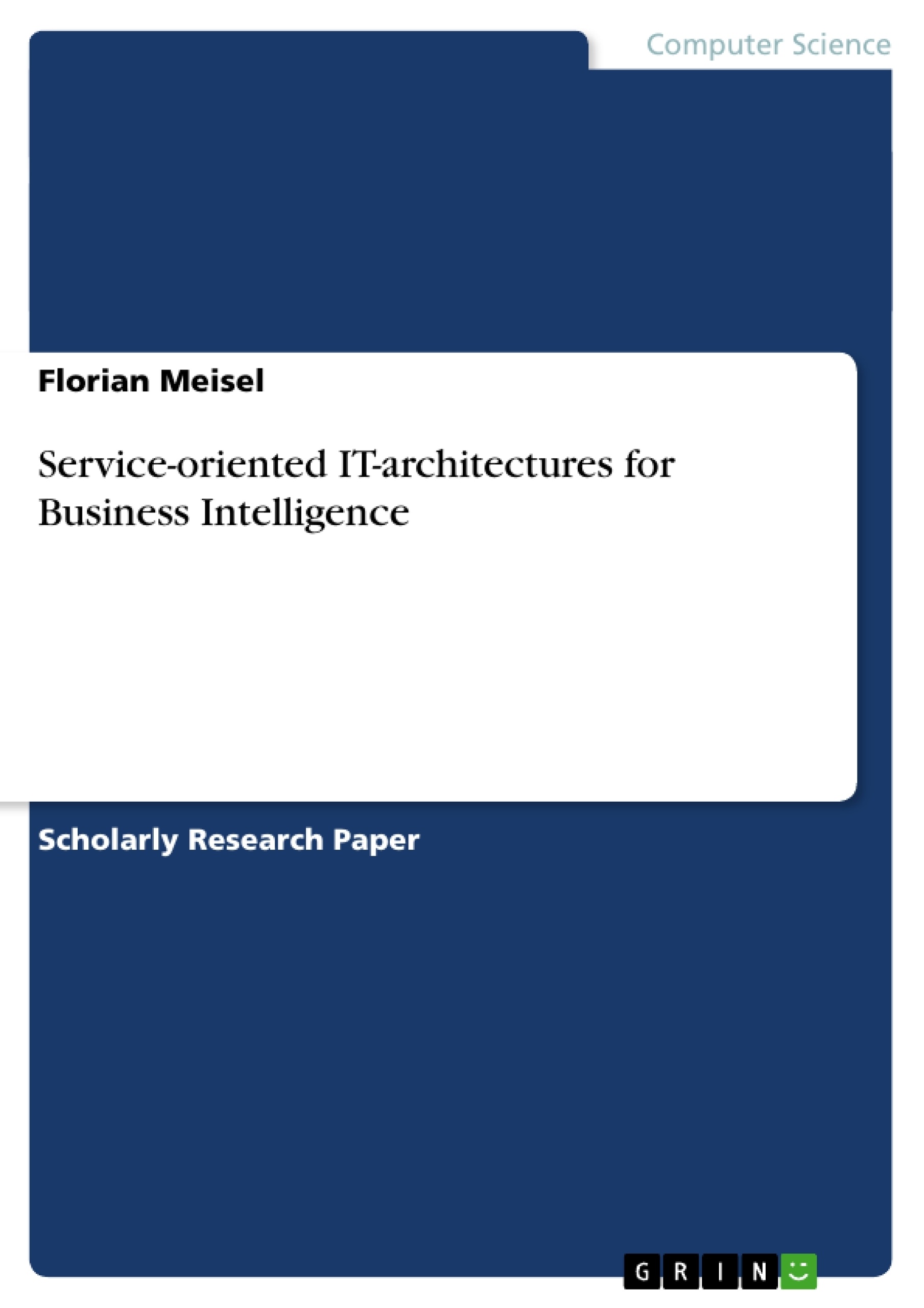Einstein made that famous statement many decades ago, and it's still relevant today for building superior software systems. Unfortunately, as anyone who has been in the IT industry for long can point out, far too many software systems have failed Einstein's test. Some are made too simple to carry out the duties they are supposed to perform. Others are made too complex, and the costs of building and maintaining them have rocketed, not to mention the nearly impossible tasks of integrating different systems together
Businesses nowadays operate in a fast changing and highly complex environment, with more competitors fighting for potential clients. This environment calls for businesses that have the ability to rapidly react on changes and thus are highly flexible in their nature. With the high amount of knowledge available to businesses it
becomes harder to identify changes in the market and make the correct decisions. This is where Business Intelligence comes into discussion which aims at supporting exactly this process of evaluating the data and knowledge available and making decisions. But knowledge is often stored in different locations throughout the
business, especially in international businesses with many different country offices the issue of different IT-applications used that can not communicate with each other appears to be a major problem. This creates a demand for service-oriented architecture.
Overt the last four decades IT systems have grown exponentially, leaving companies to handle increasingly complex service architectures. Traditional architectures have reached the limit of their capabilities, while traditional needs of IT organisations persist. IT departments still need to respond quickly to new business
requirements, continually reduce the cost of IT to the business and an integrate new business partners and customers.
In this paper I would like to take a closer look at the concept of service-oriented architecture and examine the role of it with regards to Business Intelligence.
At first I will introduce the topic of business intelligence, in the second part of the paper which is my main focus, I aim at providing deeper insight on service-oriented architecture. I will then concentrate on the question how this architecture is connected
to Business Intelligence, giving a case study of Deutsche Post as example.
Inhaltsverzeichnis
- 1. INTRODUCTION
- 2. BUSINESS INTELLIGENCE – DEFINITIONS AND TASKS
- 2.1 THE VALUE OF BUSINESS INTELLIGENCE
- 2.2 THE BUSINESS INTELLIGENCE PROCESS
- 3. SERVICE ORIENTED ARCHITECTURE (SOA)
- 3.1. WHAT IS UNDERSTOOD BY A SOA?
- 3.2. REQUIREMENTS FOR A SOA
- 3.3. CHARACTERISTICS OF A SOA
- 3.3.1. The SOA Temple_
- 3.4. DEFINITION OF „SERVICE“ FOR SOA
- 4. SOA FOR BUSINESS INTELLIGENCE
- 4.1. THREE PROCESS PHASES OF BI WITH SOA
- 4.2. BENEFITS OF SOA FOR BUSINESS INTELLIGENCE TASKS
- 4.3 WHAT THE TRANSFORMATION OPPORTUNITY LOOKS LIKE
- 5. CASE STUDY: IMPLEMENTATION OF A SERVICE ORIENTED ARCHITECTURE AT DEUTSCHE POST MAIL
- 6. CONCLUSION
- 7. REFERENCES
Zielsetzung und Themenschwerpunkte
This bachelor thesis examines the concept of service-oriented architecture (SOA) and its role in the context of Business Intelligence (BI). The paper aims to provide a comprehensive understanding of SOA, its benefits, and its potential for transforming BI processes. The thesis explores the key aspects of SOA, including its definition, characteristics, and requirements, and analyzes how SOA can be applied to enhance BI tasks and achieve greater efficiency and flexibility.
- Definition and characteristics of SOA
- Benefits of SOA for BI tasks
- Implementation of SOA in BI processes
- Case study of Deutsche Post Mail
- Future trends and challenges in SOA for BI
Zusammenfassung der Kapitel
The introduction provides an overview of the topic and highlights the importance of SOA in today's business environment. It emphasizes the need for flexible and adaptable IT systems to meet the demands of a rapidly changing market.
Chapter 2 defines Business Intelligence and its key tasks. It explores the value of BI in gaining insights from data and making informed decisions. The chapter also discusses the challenges of integrating data from various sources and the need for efficient data management.
Chapter 3 delves into the concept of service-oriented architecture (SOA). It defines SOA, its characteristics, and its requirements. The chapter also explores the different components of SOA and how they contribute to its overall functionality.
Chapter 4 examines the application of SOA in the context of Business Intelligence. It discusses the benefits of using SOA for BI tasks, such as improved data integration, enhanced flexibility, and reduced costs. The chapter also explores the potential of SOA to transform BI processes and enable new capabilities.
Chapter 5 presents a case study of Deutsche Post Mail, illustrating the successful implementation of SOA in a real-world business environment. The case study highlights the practical benefits of SOA and its impact on the company's BI operations.
Schlüsselwörter
The keywords and focus themes of the text include service-oriented architecture, business intelligence, data integration, flexibility, efficiency, case study, Deutsche Post Mail, and transformation opportunity. The paper explores the benefits of SOA for BI tasks and examines its potential to enhance data management, improve decision-making, and drive business growth.
- Citation du texte
- Mag.Bakk Florian Meisel (Auteur), 2006, Service-oriented IT-architectures for Business Intelligence, Munich, GRIN Verlag, https://www.grin.com/document/115334
-

-

-

-
Téléchargez vos propres textes! Gagnez de l'argent et un iPhone X. -

-
Téléchargez vos propres textes! Gagnez de l'argent et un iPhone X. -

-
Téléchargez vos propres textes! Gagnez de l'argent et un iPhone X. -

-
Téléchargez vos propres textes! Gagnez de l'argent et un iPhone X. -

-
Téléchargez vos propres textes! Gagnez de l'argent et un iPhone X. -

-
Téléchargez vos propres textes! Gagnez de l'argent et un iPhone X. -

-
Téléchargez vos propres textes! Gagnez de l'argent et un iPhone X. -

-
Téléchargez vos propres textes! Gagnez de l'argent et un iPhone X. -

-
Téléchargez vos propres textes! Gagnez de l'argent et un iPhone X.

